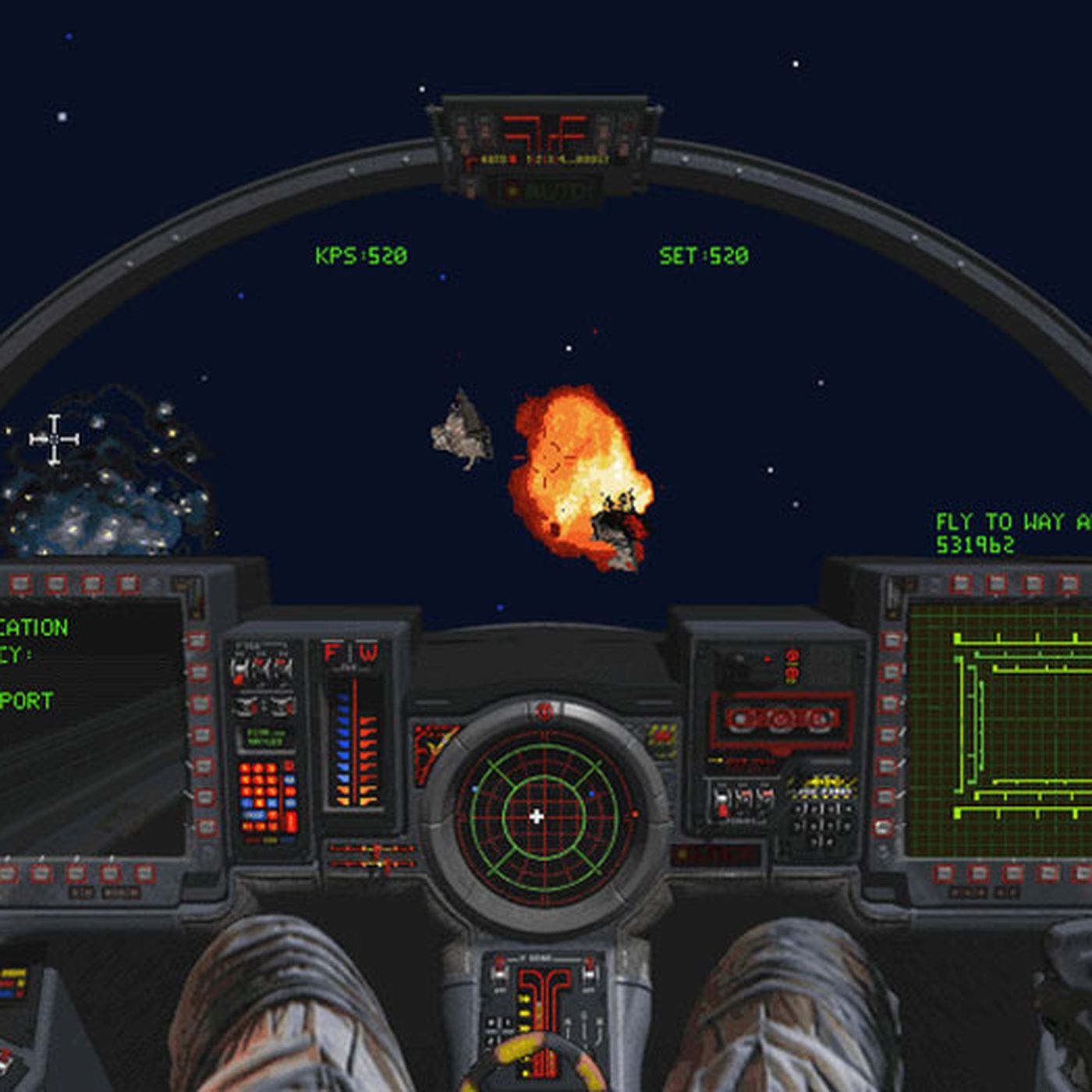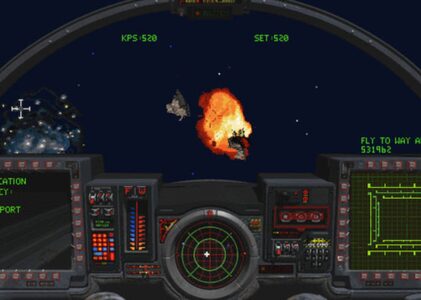Wing Commander, the legendary space combat simulator, stands as a hallmark in the history of gaming. Created by Chris Roberts and first released in 1990, this series took players on thrilling journeys through the cosmos, combining cutting-edge graphics, engaging storytelling, and immersive gameplay. In this article, we delve deep into the universe of Wing Commander, covering its genre, platforms, gameplay mechanics, key features, strategies, cheats, reviews, cultural impact, sequels, and even explore similar games that have attempted to capture its magic.
Genre and Platforms
Wing Commander: An Epic Space Opera
Wing Commander is primarily known as a space combat simulator. It falls within the action-adventure and simulation genres, but its unique blend of spacefaring adventure and intense dogfights sets it apart. The game series blends cinematic storytelling with thrilling combat sequences, offering players an immersive experience unlike anything before.
Initially released for MS-DOS, the series quickly expanded its reach to other platforms, including Amiga, Super Nintendo, and even the 3DO. Its success prompted ports to various consoles and operating systems, making it accessible to a wide range of gamers.
Gameplay: Taking Flight in the Universe
Navigating the Stars
The gameplay of Wing Commander places you in the cockpit of advanced space fighters, such as the iconic F-14 inspired F-44 Rapier. You assume the role of a rookie pilot climbing the ranks within the Terran Confederation’s fleet, battling the menacing Kilrathi, an aggressive feline race bent on galactic conquest.
The game is structured around a series of missions, each requiring strategic planning and expert piloting skills. These missions can include escorting convoys, engaging enemy fighters, or even launching surgical strikes on Kilrathi installations.
A Cinematic Experience
What truly sets Wing Commander series apart is its cinematic approach to storytelling. Rather than relying solely on text-based narratives, the game employs full-motion video (FMV) cutscenes to drive the plot forward. These scenes feature a talented cast, including Mark Hamill, Malcolm McDowell, and John Rhys-Davies, who bring the characters to life.
The decisions you make during the game can significantly impact the story’s progression, leading to different endings. This branching narrative adds a layer of replayability, encouraging players to explore various paths and outcomes.
Multiplayer Mayhem
Wing Commander also ventured into multiplayer gaming. In 1993, the release of “Wing Commander: Armada” introduced a multiplayer mode that allowed players to engage in dogfights with their friends or foes over a network. This feature paved the way for more interactive gaming experiences in the series and beyond.
Key Gameplay Features
1. Immersive Universe: Wing Commander offered a vast and richly detailed universe for players to explore. From the bustling decks of carriers to the desolate landscapes of alien worlds, the game’s environments were visually captivating and added depth to the narrative.
2. Realistic Combat: The game’s combat mechanics were ahead of their time, with realistic physics and weapon systems. Players had to manage energy levels, shields, and weaponry while engaging in intense dogfights.
3. Character Development: As you progressed through the game, your character would earn medals and promotions, reflecting your skill and accomplishments. This added a sense of achievement and motivation to excel in missions.
4. Meaningful Choices: Your decisions influenced not only the story but also the fate of characters. The choices you made could lead to different mission outcomes and character interactions, adding a layer of complexity to the narrative.
5. Technological Innovation: Wing Commander pushed the boundaries of gaming technology in the early ’90s. It was one of the first games to utilize SVGA graphics and featured impressive 3D-rendered ship models.
Strategies and Cheats
Mastering the Skies
Wing Commander’s gameplay demanded skill and strategy. To succeed, players needed to master several key tactics:
1. Energy Management: Balancing your ship’s energy allocation between shields, weapons, and engines was crucial. Learning when to divert power for an extra shield boost or a quick burst of speed could mean the difference between victory and defeat.
2. Formation Flying: Flying in formation with your wingmen was essential for survival. This formation allowed for better coverage and protection during combat missions.
3. Target Prioritization: Identifying high-priority targets, such as enemy aces or capital ships, was vital. Taking down these threats could turn the tide of battle.
4. Hit-and-Run Tactics: Engaging in hit-and-run attacks, where you swoop in to deliver a devastating blow and then retreat to safety, was a reliable strategy in many missions.
5. Cheat Codes: For those seeking a more relaxed gaming experience, Wing Commander also had its share of cheat codes. These codes could grant you invincibility, unlimited weapons, or even skip challenging missions.
Cheat codes became an integral part of the Wing Commander experience for players who wanted to experiment with the game’s mechanics or simply enjoy the story without the stress of constant combat.
Reviews and Cultural Impact
Critical Acclaim
Wing Commander received widespread critical acclaim upon its release. Reviewers praised its innovative use of FMV, engaging storyline, and immersive gameplay. The game’s production values set a new standard in the industry, and it quickly gained a dedicated fan base.
The success of Wing Commander led to several sequels and expansion packs, further solidifying its status as a gaming phenomenon. Each new installment continued to push the boundaries of technology and storytelling, earning accolades from both critics and players.
Cultural Phenomenon
Beyond its critical success, Wing Commander left an indelible mark on popular culture. It played a significant role in popularizing space combat simulations and contributed to the rise of the interactive movie genre in gaming.
The inclusion of Hollywood actors in FMV sequences added a level of prestige to the game, attracting attention from a broader audience. Wing Commander’s success also paved the way for other games to incorporate cinematic storytelling into their gameplay, a trend that continues to influence the industry today.
Legacy and Fan Community
Even after the release of its sequels, Wing Commander maintains a dedicated fan community. Modding enthusiasts have created numerous fan-made missions, campaigns, and enhancements, keeping the game alive and accessible to new generations of gamers.
The series’ influence can be seen in later space simulation games like “Freelancer” and “Star Citizen,” both of which were developed by Chris Roberts, the creator of Wing Commander. These games carry on the tradition of immersive storytelling and space exploration that Wing Commander pioneered.
Sequels and Examples of Similar Games
Continuing the Saga
Wing Commander spawned a series of sequels and expansions that expanded upon its universe and gameplay:
- Wing Commander II: Vengeance of the Kilrathi (1991): This sequel continued the story of the Terran-Kilrathi conflict and introduced new features, including improved graphics and voice acting.
- Wing Commander III: Heart of the Tiger (1994): The third installment elevated the series with high-quality FMV sequences featuring notable actors like Mark Hamill and Malcolm McDowell. It also introduced branching storylines and moral choices.
- Wing Commander IV: The Price of Freedom (1995): Building upon its predecessor, this game featured even more immersive FMV and a complex narrative that explored the consequences of war.
- Wing Commander: Privateer (1993): This spin-off title took a different approach, offering a more open-ended, sandbox-style gameplay in the Wing Commander universe. Players could become space traders, pirates, or mercenaries.
- Wing Commander: Prophecy (1997): The series took a leap into the future with Prophecy, featuring updated graphics and new alien races. It also introduced an enhanced multiplayer mode.
In the Shadow of Wing Commander
While Wing Commander stands as a unique and influential series, it inspired other games to explore similar themes and gameplay mechanics. Some notable examples include:
- Star Wars: X-Wing (1993): This game put players in the cockpit of iconic Star Wars starfighters, offering a similar blend of space combat and storytelling in the beloved Star Wars universe.
- Freespace 2 (1999): Often regarded as one of the best space combat simulators, Freespace 2 embraced the genre’s core elements with engaging missions and a gripping narrative.
- TIE Fighter (1994): Another Star Wars-inspired game, TIE Fighter allowed players to experience the Galactic Empire’s side of the conflict, offering a fresh perspective on the classic space opera.
- EVE Online (2003): While more focused on MMO gameplay, EVE Online captures the essence of epic space battles and player-driven narratives, akin to Wing Commander’s grandeur.
- Star Citizen (Ongoing Development): Developed by Chris Roberts, the mind behind Wing Commander, Star Citizen aims to redefine the space simulation genre with unparalleled graphics, scale, and depth.
Conclusion
Wing Commander, with its innovative approach to storytelling, groundbreaking graphics, and immersive gameplay, remains an iconic series in the world of gaming. It not only set new standards for space combat simulations but also influenced the gaming industry’s evolution. Its legacy lives on in the hearts of fans and in the continued development of spacefaring adventures that seek to capture the magic that made Wing Commander a timeless classic in gaming history.

